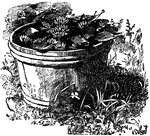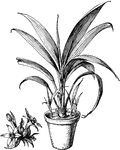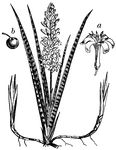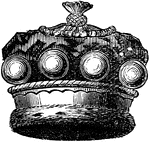
Seal of Sir Thomas Lucy
The official seal of Sir Thomas Lucy, a magistrate who persecuted recusant Catholic families. The seal…

Abutilon Shrub
Abutilon is a showy, free-growing shrub. There are many hybrids that are cultivated. They grow best…

Flowering Branch of Begonia Admiration
Begonia admiration is a single-flowered variety. The flowers are a vivid, orange-scarlet color. Begonia…

Cross Sections of Ovary or Red Campion
A shows five carpels joined in a central mass. B shows a half grown ovary with a central mass bearing…

Allamanda Cathartica Variety Hendersonii
Allamanda cathartica variety hendersonii is tall, vigorous, and free flowering. The leaves are large,…

Tub of Water-Lilies
Tub culture should be resorted to only from lack of space. Moderate growers that are free-flowering…

Begonia Ingramii
The flowers of Begonia ingramii are large and rose colored. It is a free flowering plant.

Curculiga Latifolia
Curculiga latifolia grows two to three feet tall. The flowers are bright yellow and grow in a dense…

Durian
Durian is the common name of durio zibethinus. The fruit tree is native to India and Malaysia. Concerning…

Free Style of Design
Illustrated are good plant forms for the free style of design for landscape gardening.

Nephrolepis Bostoniensis
Nephrolepis bostoniensis is a free growing fern with dark green, spreading leaves. It is good as a pot…

Nephrolepis Magnifica
Nephrolepis magnifica is a free grower of open habit. The leaves are erect and fifteen inches long.

Nymphaea Tetragona
Nymphaea tetragona is a free bloomer and the smallest nymphaea in cultivation. The flowers open for…

Gladiators
This illustration shows various types of gladiators, each type with with his specific weapons attributed…

Mathathias Laments the Defilement of Jerusalem
"And Mathathias said: Woe is me, wherefore was I born to see the ruin of my people, and the ruin of…

Snake Plant
Sansevieria Zeylanica is the Latin name, but this plant is also called a Mother-in-law's Tongue. "A…

Canadian Snow Shoe
"A contrivance attached to the foot to enable the wearer to walk on deep snow without sinking to the…









